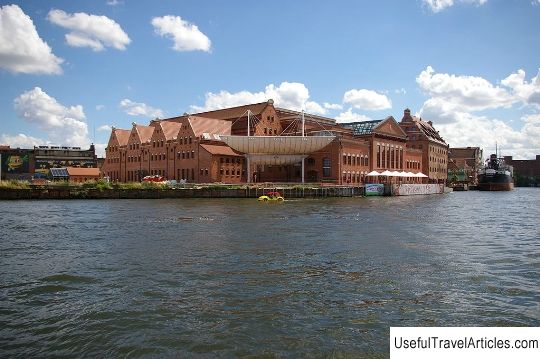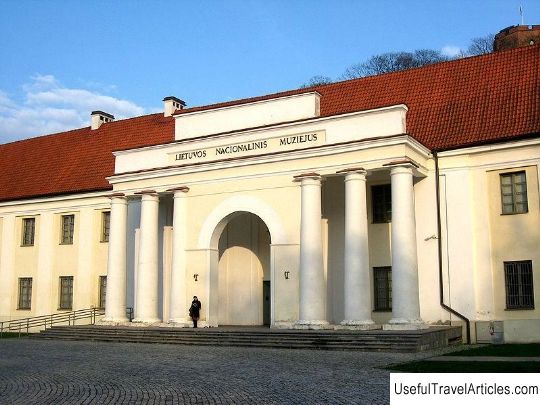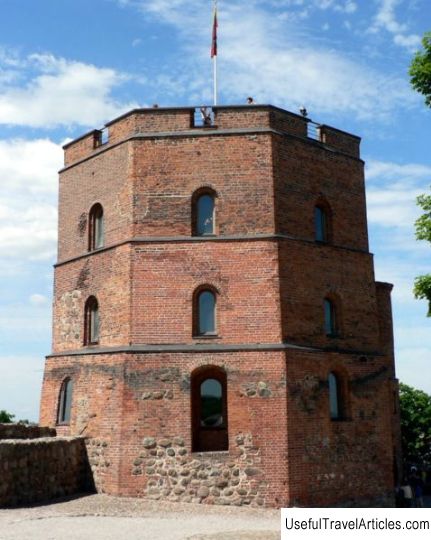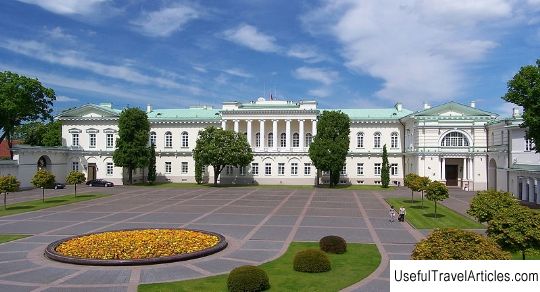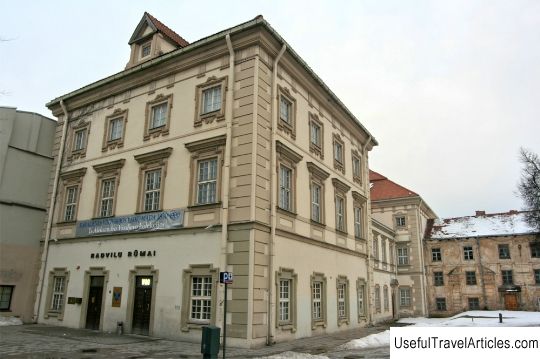Verkiu dvaras (Verkiu dvaras) description and photo - Lithuania: Vilnius
Rating: 7,7/10 (3454 votes) 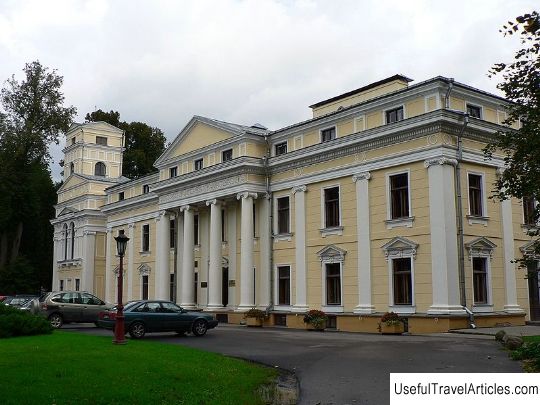
Verkiu dvaras description and photo - Lithuania: Vilnius. Detailed information about the attraction. Description, photographs and a map showing the nearest significant objects. The title in English is Verkiu dvaras. Photo and descriptionThe Verkiai district is located seven kilometers from the center of Vilnius and has long been a part of it. Until the 14th century, this area belonged to the Lithuanian grand dukes. Since then, its current name has been preserved. It is associated with an old local legend. They say that once the Lithuanian prince Gedemin, while hunting in the forest, heard a child crying. Looking closer, he saw a crying baby in the stork's nest, and, naturally, took him to him. The child was named Lizdeyka, which means a nest in Lithuanian. But the place where the prince found the child began to be called Verkiai - from the Lithuanian word "verkti", that is, to cry. In the Vilnius regional park Verkiai, there is an architectural and historical monument of the 17th century, the Verkiai Palace. The palace has a very interesting history. In 1387, the Catholic bishop received the village of Verkiai as a gift from the Polish king Vladislav II Jagailo. Soon a wooden palace was built here, around which a park was arranged. The summer residence of the bishop settled in the palace. In 1658, during the battle of the Polish army, led by hetman V. Gonsevsky, with the Russian army led by Y. Dolgoruky, the palace was badly damaged, and gradually began to collapse. In 1700, a stone baroque palace was built on the site of a former wooden palace. A few years later, in 1705, Peter I was received in the palace. In 1779, the palace became the private property of the Vilnius bishop Ignatius Masalski. In 1780, the bishop decided to carry out a major overhaul of the palace. The original reconstruction was carried out by the architect M. Knackfus. A year later, the construction was entrusted to the architect L. Stuoka-Gucevicius. He radically changed the original plan, and began to build a palace in the style of classicism. Work continued until 1792. But they were never fully completed. Political instability began in the country. Soon the bishop presented the Verkiai Palace to Elena Masalska, his niece. She, in turn, sold it to Marshal S. Yasensky. Due to financial insufficiency, the marshal also did not finish construction. In 1812, the presence of Napoleon's troops in the region made a negative contribution to the difficult fate of the Verkiai Palace. In 1840, the palace was acquired by the Russian Field Marshal P. Wittgenstein, who managed to complete the construction. The palace complex had a horseshoe-shaped appearance. Around the oval pool decorated with a fountain, three buildings were built. The central building of the palace was two-story, decorated with a portico with six Ionic columns, as well as pilasters of the same order. On the pediment of the main portico were reliefs depicting rural work. The front facade windows were decorated with sandriks and trims. The road leading to the main entrance was winding and gracefully skirted the fountain platform. The ensemble looked especially picturesque from a distance: the lush vegetation of the park, located on a hill, gave the buildings an appearance of reliability and comfort. The Palace in Verkiai was then, and remains to this day, a monumental structure: the length of the central building is 85 meters, and the width is 10 meters. In the very center of the main building is a spacious ceremonial hall overlooking the garden. This room was intended for theatrical performances. It was assumed that the performances would be attended by guests from different places, so there were living rooms on both sides of the hall. The hall was decorated with niches for sculptures located on four sides, symmetrically. Above the roof of the palace, in the area of the central hall, a copper, ellipsoidal dome was installed. On the surface of the ceiling of the main vestibule there was a 19th century painting by G. Becker "Cupid and Psyche", which is now completely restored. After the Second World War, the Soviet government nationalized the Verkiai Palace and transferred it to the Academy of Sciences Lithuanian SSR. Today the building of the Verkiai Palace is occupied by the Institute of Botany at the Lithuanian Academy of Sciences.          We also recommend reading Memorial complex Brest Hero-Fortress description and photos - Belarus: Brest Topic: Verkiu dvaras (Verkiu dvaras) description and photo - Lithuania: Vilnius. |
